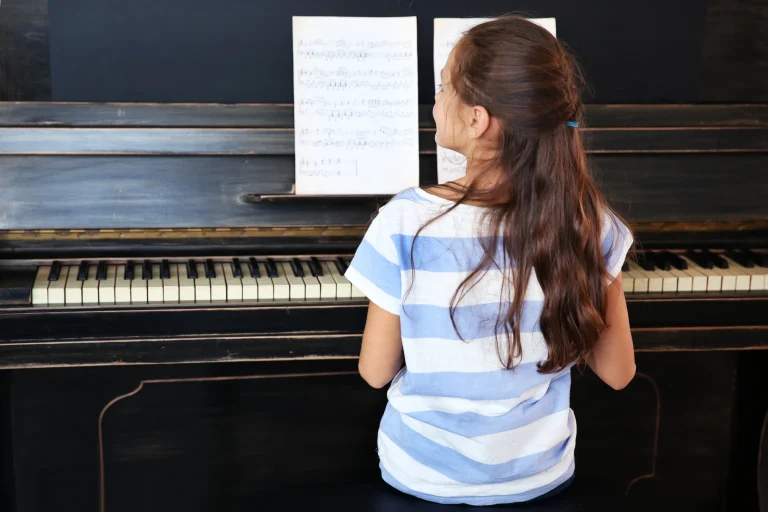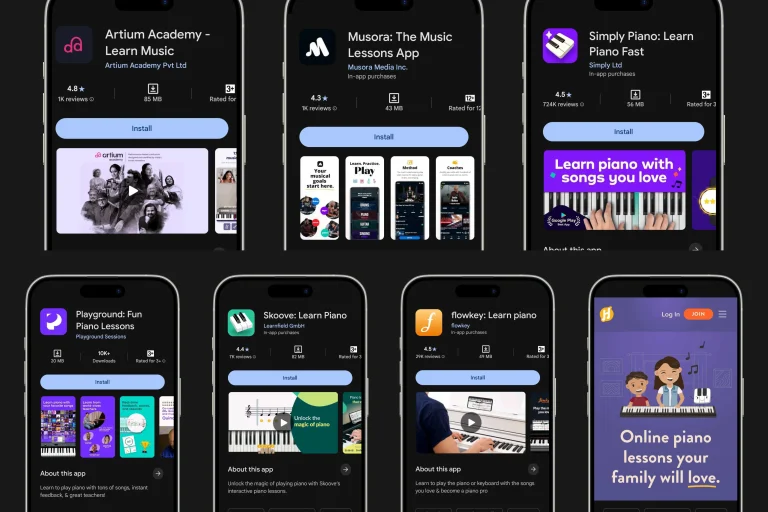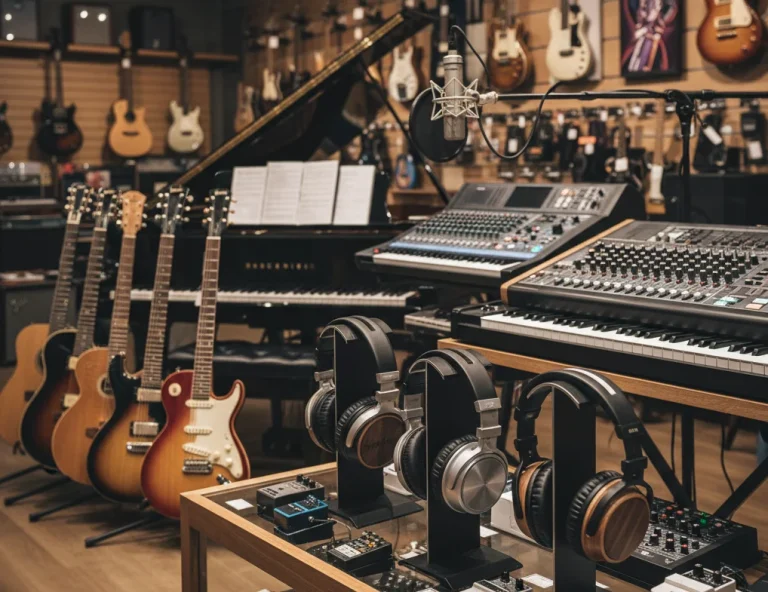All Topics
- Alchemizing Music Concepts for Students
- Artist Spotlight
- artium gift card
- Artium Maestros
- Artium News
- buying guide
- Carnatic Music
- Devotional Music
- Editorials by Ananth Vaidyanathan
- Film Music
- Guitar
- Hindustani Classical Music
- Indian Classical Music
- Indian Folk Music
- Insights
- Instruments
- Karaoke Singing
- Keyboard
- Kids Music
- maestros
- Music Education
- Music for Kids
- Music Industry
- Music Instruments
- Music Legends
- Music Theory
- Music Therapy
- Piano
- piano guide
- Success Stories
- Tamil Film Music
- Telugu Film Music
- Time Theory
- Tools
- Uncategorized
- Vocal Singing
- Vocals
- western classical music
- western music
- Western vocal music
How to Play Jazz Piano for Beginners: Learn These Skills First
How to Play Jazz Piano for Beginners: Learn These Skills First

Table of Contents
Out of the many piano styles, Jazz Piano is relatively well-known. It is a beautiful blend of creativity, improvisation, and technical skill. With the help of online piano classes, you can express yourself through the music played, connecting spontaneous melodies, harmonies, and rhythms to create something truly unique. Whether you’re drawn to the lively swing of bebop or the soul-stirring tones of ballads, jazz piano opens the door to endless musical exploration.
At first glance, jazz piano can seem daunting. However, your journey to learn piano can become easier with the proper guidance and support. You can drastically improve your foundational skills with consistent practice. In this blog, we’ll walk through the essential techniques and skills every beginner should focus on to kickstart their jazz piano journey. From understanding basic jazz chords to exploring improvisation, you’ll gain the tools and confidence to embrace this rich and dynamic style.
But before that…
If you’re really excited to start your journey in music, start with a free trial lesson today!
Let’s dive in, shall we?
Your Various Lesson Resources
When starting, you can feel quite giddy and excited; however, you can be confused and lost on how to proceed. With the Internet age, all the information you require exists online and offline. Well, to help you out, here are a few resources you can look into:
- Our online musical platform offers online piano lessons that can be a great starting point for beginners. It can also serve as a great starting point for people’s interests and hobbies, even careers in some cases.
- YouTube can also serve as a great resource of information. Many channels are dedicated to teaching and helping people understand the world of jazz music and jazz piano. Many tutorials include visual aids like on-screen keys, making them ideal for beginners.
- Other than these online resources, you can go back to the basics. There are quite a few books about jazz piano and how to play it. Many established musicians have written such books to help guide beginners and support them in their journey.
- Quite a few digital tools are available to help you learn how to play the jazz piano. These tools can help you with access to sheet music to follow along or practise specific jazz standards to help you improve your skills. Such tools and more also exist within Artium Academy’s teaching process.
For beginners, it is crucial to understand the different aspects of jazz piano. So, upon starting, take it slow and steady. With the help of online piano classes, carefully understand the instrument’s intricacies and style. Practice at a slower tempo and slowly gain your confidence as you play. Master the basics, such as jazz chords, scales, and rhythms. The last and most important thing to focus on is consistent practice. Dedicate a specific time in your day to learning and improving your technique with this style.
Swing Rhythm
One of the most defining features of jazz music is the incredible ‘swing’ feel it creates. Swing rhythm gives jazz its energy, groove, and sense of flow, making it instantly recognisable and deeply engaging. As you take part in piano classes, you will understand that it involves a subtle unevenness in the timing of the notes, creating a laid-back and abbreviated feel. Instead of playing notes evenly (like in classical music or pop), swing gives them a playful, bouncy quality that feels alive and dynamic.
So, to understand swing, it can be helpful to compare them to straight eighth notes:
- Straight eighths: Notes are spaced evenly, like counting “1-and, 2-and, 3-and, 4-and.”
- Swing eighths: The rhythm mimics a triplet’s first and third notes, so it sounds like “long-short, long-short.”
Bringing that feeling of ‘swing’ can feel complicated at first, so here are a few tips that you can employ to help the process easier:
- Start with scales. Play a simple major or minor scale with swing eighth notes. Focus on emphasising the “long-short” pattern.
- Before playing, try clapping or tapping a swing rhythm to get the feel in your body.
- Take a two-chord progression (like G7 to Cmaj7) and play it with a swing rhythm. Keep it slow and steady at first.
Swing rhythm might feel tricky initially, but it will become second nature with patience and consistent practice. Once you master this essential jazz element, you can bring a vibrant, infectious groove to your piano playing.
The 2-5-1 Chord Progression
The 2-5-1 chord progression can be considered the backbone of jazz. Found in countless songs and improvisations, this progression is a fundamental building block for jazz pianists. Whether learning your first tune or crafting a solo, understanding the 2-5-1 is essential.
The 2-5-1 progression (written as ii – V – I in Roman numerals) refers to the movement between three chords in a key.
- ii (minor chord): The second degree of the scale, typically a minor seven chord.
- V (dominant chord): The fifth degree of the scale, usually a dominant seven chord.
- I (major chord): The first degree of the scale, played as a major seven chord.
In the key of C major, the 2-5-1 progression would be:
Dm7 → G7 → Cmaj7
Many jazz solos are built around 2-5-1 progressions. Learning to play and recognise them helps you anticipate and respond to changes in a song. The 2-5-1 appears in virtually every jazz standard, making it a must-know progression for any aspiring jazz musician.
Comping Rhythm
In jazz, a comping rhythm is something that you play alongside your chords to accompany them. It is one of the most essential skills you will develop; it’s the art of playing chords rhythmically and expressively to support other musicians while keeping the music’s harmonic foundation alive.
Comping is more than just playing chords; it is also about how you play them. Rhythm, harmony, and interaction all play an important part. Adding a groove to improve the overall feel of the music or providing a strong harmonic framework to keep playing the progressions creatively are the various impacts of having a comping rhythm to support your playing.
To play the rhythm, start small with basic chords. Carefully understand them and focus on mastering them. Keep a higher focus on creating and maintaining a rhythm. Start by comping in quarter notes, then try mixing in eighth notes and rests for a more dynamic feel. Practice with a metronome; this helps you develop steady timing while experimenting with rhythms.
Lead Sheets
Unlike sheet music arrangements, a lead sheet showcases a song’s melody, harmony and structure. It is a simplified musical notation form containing the melody and chord symbols. In a few cases, the lyrics are also mentioned. Unlike classical sheet music, a lead sheet doesn’t specify how to play the chords or rhythm. This open format encourages improvisation and personal interpretation.
Lead sheets provide the foundation of a song, leaving the intricacies up to your creativity. It allows for a high level of freedom to showcase your taste, style and abilities fully. The chord symbols act as a roadmap for creating your solos or accompaniment patterns. Lead sheets are widely used in jazz, making communicating with other musicians in jam sessions or ensembles easier.
Applying These Techniques
Now that you’ve explored swing rhythm, the 2-5-1 progression, comping, and lead sheets, it’s time to combine these skills into a cohesive practice routine. By keeping a plan and following it, your abilities can improve immensely. So, why not look into a way to implement these techniques as you learn cohesively?
Start with basic warm-ups. Spend 10-15 minutes warming up scales in swing rhythm. From there, practice building your chords in a 2-5-1 progression. Start slowly, and you will eventually progress to a level where your abilities develop faster. From there, spend 20–30 minutes practising a simple jazz standard using a lead sheet. Take the time to start implementing comping techniques as well.
Once you feel comfortable with these techniques, start adding in your improvisations. The pianist’s ability to improvise is a major aspect of jazz piano. Devote 15–20 minutes to exploring improvisation over a 2-5-1 progression. Staying consistent with your practice will help ensure the growth of your skills and abilities. Reflect on your abilities and where you need to improve. Take the time to learn more techniques and tricks to help you grow.
Conclusion
By exploring the different techniques needed to play jazz piano expertly, you can now try to master this incredible style fully. Jazz piano can be a fantastic opportunity for you to express yourself honestly. So, keep practicing consistently. Take the time to fully absorb the magic behind this beautiful style of music and have fun while learning.
You don’t have to do this alone, though. Our team at Artium Academy is there to help guide you and help you fully enjoy this beautiful experience. So, why not join our lovely family of incredible musicians?






